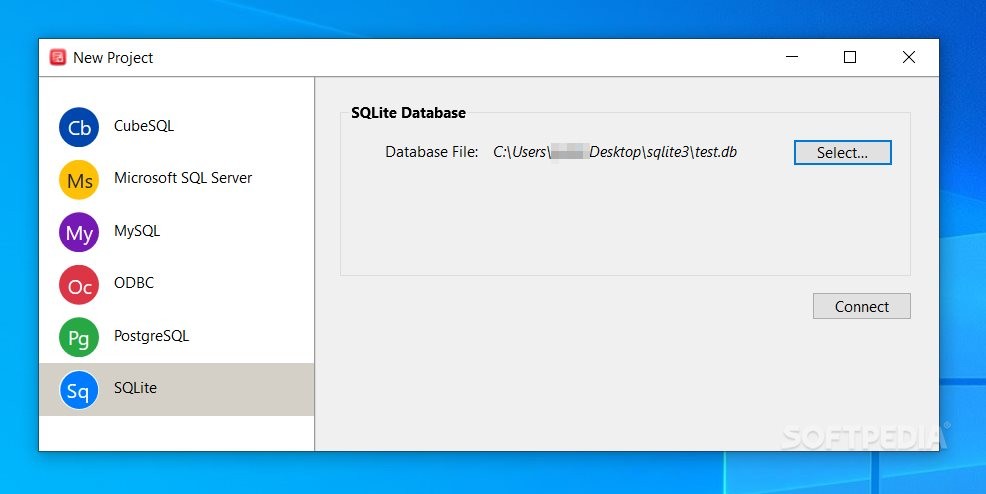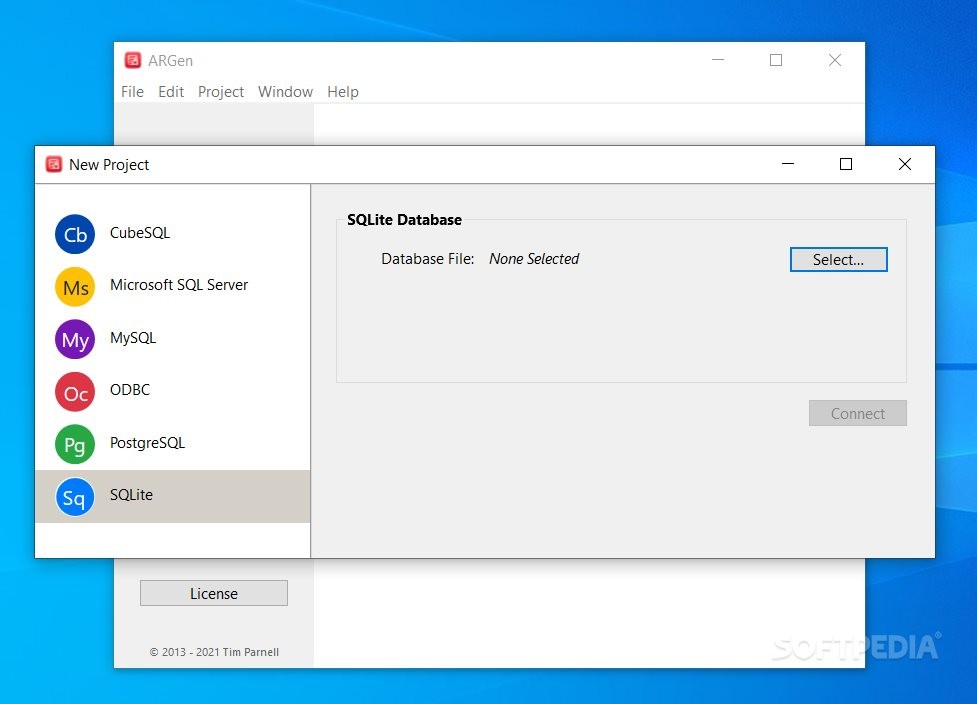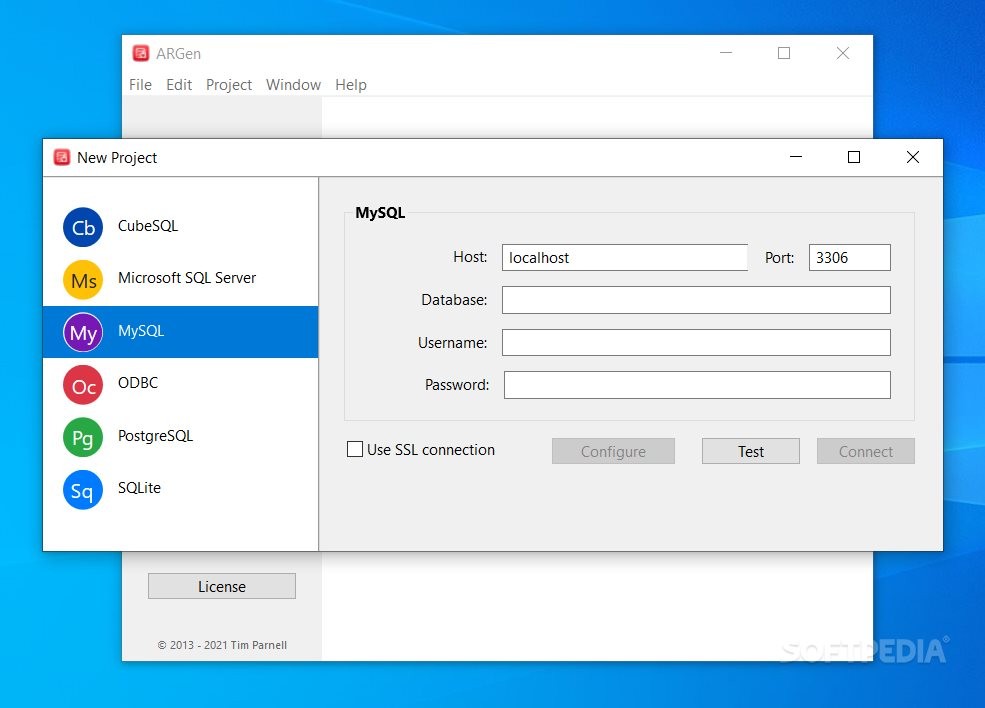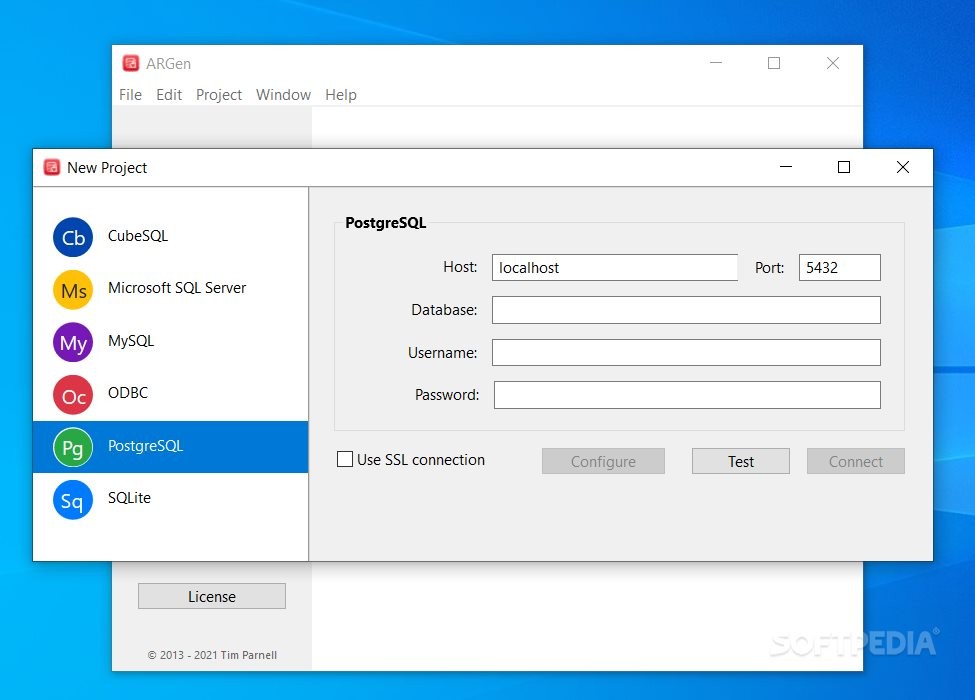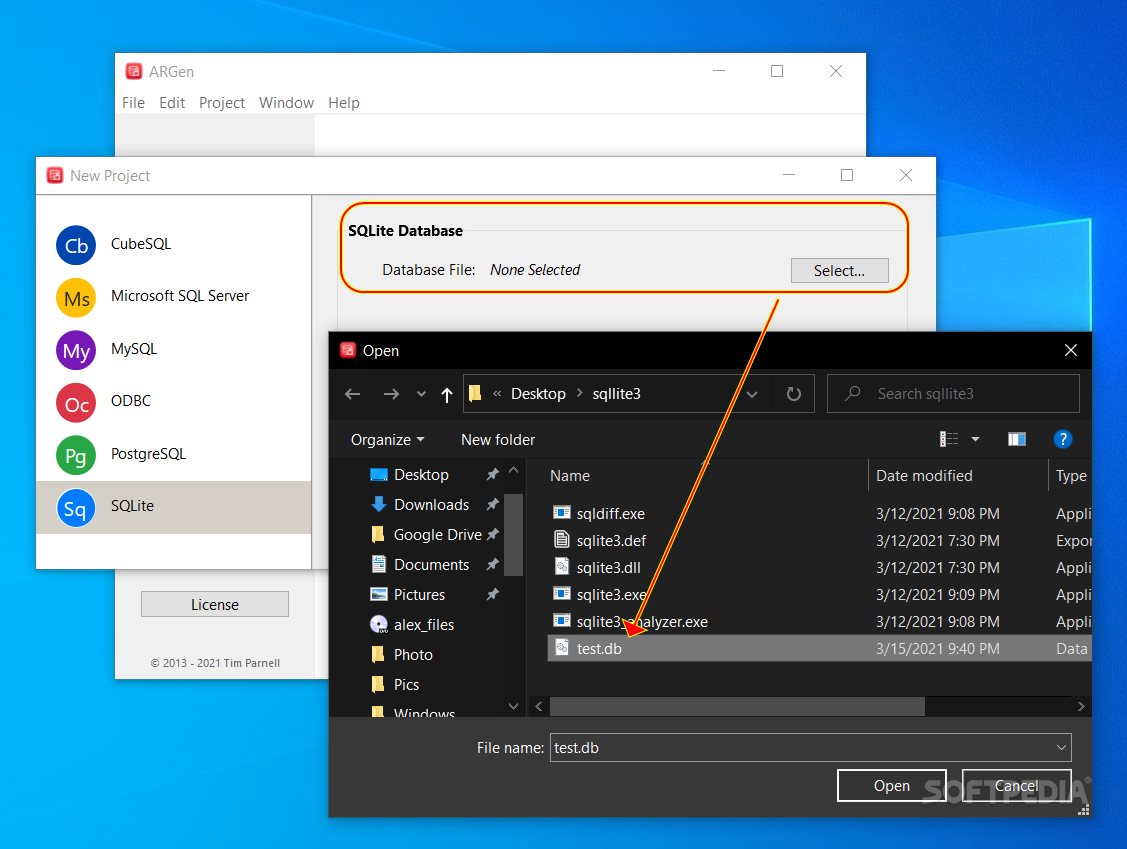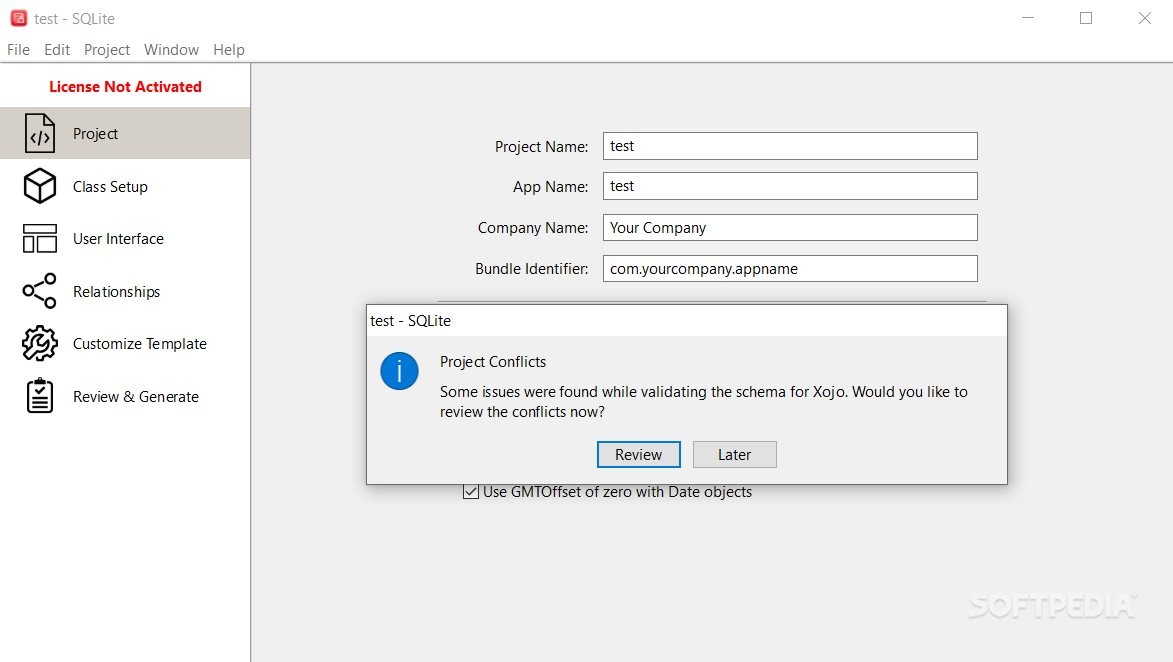
ARGen
Build 167Try a lightweight, Windows-native application that is suitable for Xojo development projects, and helps automate the process of template code creation for database-driven applications
ARGen (that stands for ActiveRecord Generator) enables you to get more from your databases, and classify large data sets like a pro, for developing database-centered and -driven applications.
The current tool is pretty small in size. However, you get a nicely organized and intuitive GUI, alongside a powerful and well-structured backend. The app manages to offer reliable features and options for those who need to develop applications in Xojo (which is both a programming language and a building/testing/compiling environment).
When opening the app for the first time, you are prompted with a login page, a model that is slightly different from one database type to another. This tool supports CubeSQL, Microsoft SQL Server, MySQL, ODBC, PostgreSQL, and SQLite. For example, for opening an SQLite data set, all you must do is specify the database's location path; on the flip side, for opening a PostgreSQL or MySQL database, you need to specify the host (it defaults to localhost), the port, the database name, the username, and the password.
After managing to open your database with ARGen, you have different methods and actions you can perform on that dataset. In the 'Project' tab, you can define the project details and type (console, desktop, iOS, Web) and the API version of Xojo (1.0 or 2.0).
In the 'Class setup,' all your table data is nicely mapped. The 'User Interface' tab offers the same info presented and mapped on categories, but this time it is from a graphical point of view. In the 'Relationships' tab, there is a mix between the previous two categories, and in the 'Customize templates' center, you can adjust the parameters of interest in the Xojo code (generated from interpreting the database structure). These categories of these parameters are Constants, Event Definitions, Methods, Properties, Shared Methods, and Shared Properties.
Finally, you can navigate to the last step of the database processing workflow — 'Review and Generate.' You can now export, in a Xojo file with Xojo syntax, the database's structured and organized data, for later integrating this information in your Xojo app development processes.
Getting started with this application and some general traits
The current tool is pretty small in size. However, you get a nicely organized and intuitive GUI, alongside a powerful and well-structured backend. The app manages to offer reliable features and options for those who need to develop applications in Xojo (which is both a programming language and a building/testing/compiling environment).
When opening the app for the first time, you are prompted with a login page, a model that is slightly different from one database type to another. This tool supports CubeSQL, Microsoft SQL Server, MySQL, ODBC, PostgreSQL, and SQLite. For example, for opening an SQLite data set, all you must do is specify the database's location path; on the flip side, for opening a PostgreSQL or MySQL database, you need to specify the host (it defaults to localhost), the port, the database name, the username, and the password.
Opening a database in the program and further configuration options
After managing to open your database with ARGen, you have different methods and actions you can perform on that dataset. In the 'Project' tab, you can define the project details and type (console, desktop, iOS, Web) and the API version of Xojo (1.0 or 2.0).
In the 'Class setup,' all your table data is nicely mapped. The 'User Interface' tab offers the same info presented and mapped on categories, but this time it is from a graphical point of view. In the 'Relationships' tab, there is a mix between the previous two categories, and in the 'Customize templates' center, you can adjust the parameters of interest in the Xojo code (generated from interpreting the database structure). These categories of these parameters are Constants, Event Definitions, Methods, Properties, Shared Methods, and Shared Properties.
Finally, you can navigate to the last step of the database processing workflow — 'Review and Generate.' You can now export, in a Xojo file with Xojo syntax, the database's structured and organized data, for later integrating this information in your Xojo app development processes.
18.7 MB
Info
Update Date
Apr 01 2021
Version
Build 167
License
Freemium
Created By
Tim Parnell
Related software Development
